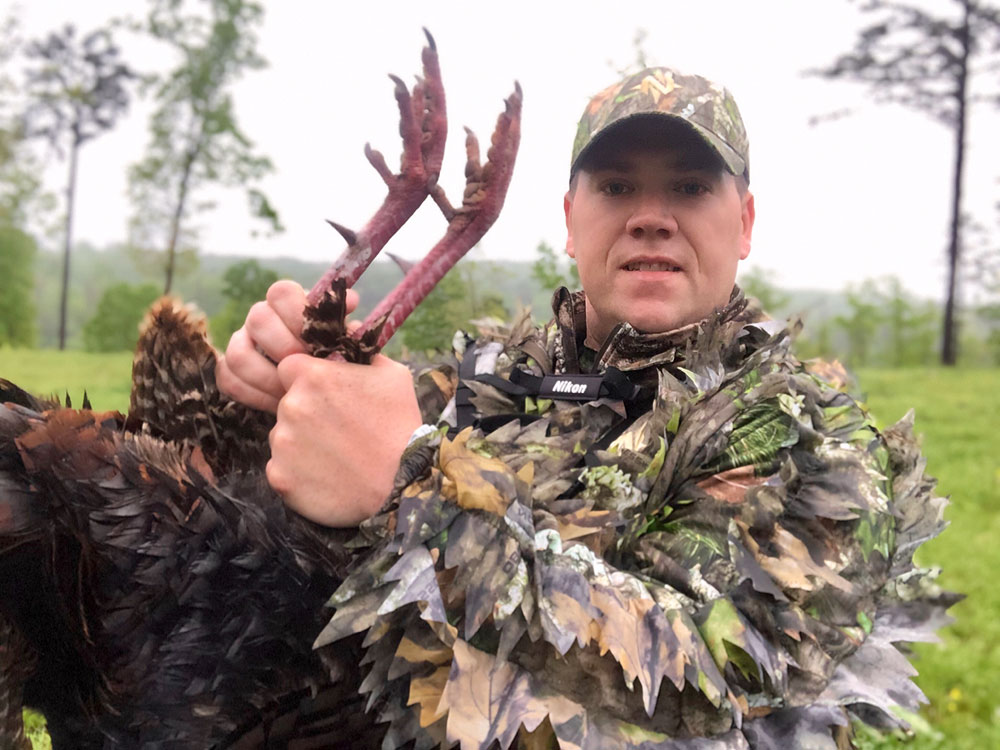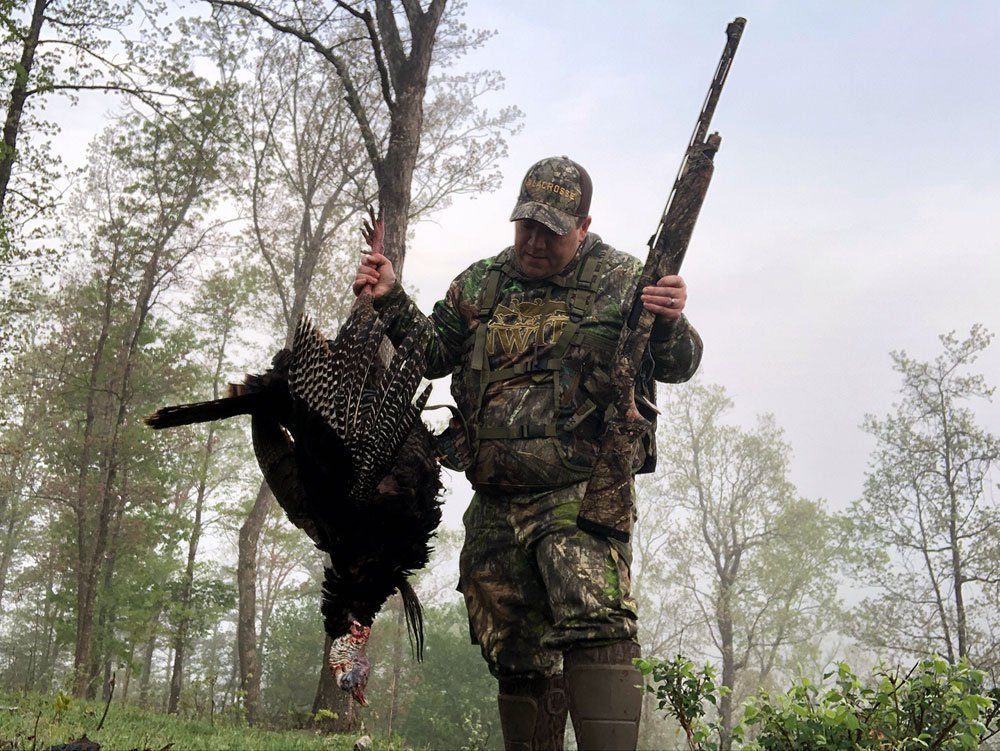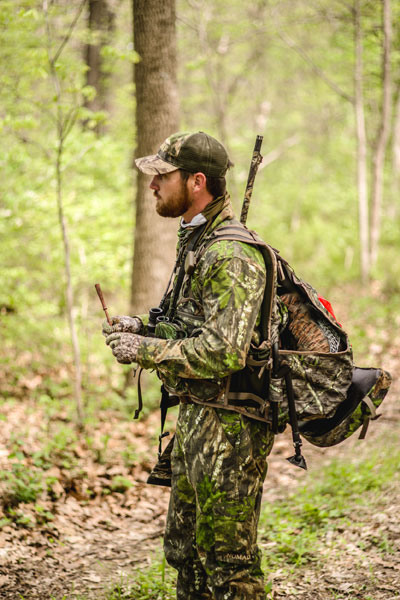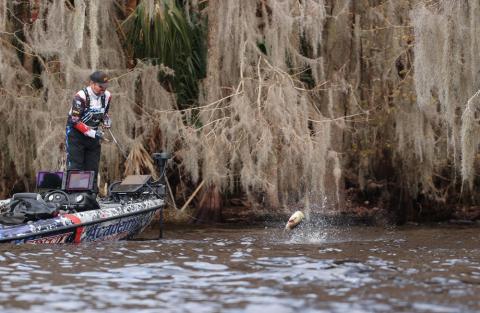Heath Wood

Checking social media to see how everybody else is doing during turkey season is something that most of us are guilty of doing. When you see everyone, who has had success on a big mature gobbler, it gives you a sense of hope, it builds the anticipation for the next hunt, or unfortunately, it can make you fall to the ever powerful not-so-good feeling of peer pressure.
Nobody likes arriving at the last part of the season without success. However, being patient and waiting out the season can lead to an easier time catching a lonely gobbler who is eager to come to a call. When you do, your reward will be trending with the #downtothewiresuccess.
One of the most common reasons for being unsuccessful in the first part of the season is dealing with gobblers who constantly have hens. When the tom spends his time with hens, it can be challenging to call him away.
The presence of a hen can cause the tom to silence his gobble and cause him to go in a different direction while following them. In all honesty, no matter how good of a caller you are or how good of a hunter you are, competing with the real thing can be challenging to say the least.
A few years ago, the last week of the season was going strong in my home state of Missouri. I found myself going into the last three days of the season without pulling the trigger on a gobbler. I will admit I was worried. With only two days left, I had one of the most epic hunts of my entire life.
After making a few calls to a tom who was roosted on the other side of a river that separated us, I sat down and thought, “I don’t have a chance of calling in this bird.” Then, a few seconds later, the tom flew from the roost across the river. The big tom landed a short distance in front of me, yet at the bottom of a hill where I couldn’t get the shot. Fortunately, the tom had a thirst for love and ended up at eight steps in front of my gun barrel within a few seconds. After a successful shot, my whole season had changed in a blink of an eye.

Once I reevaluated the hunt, I realized that there were several reasons it went the way it did.
During the earlier part of the season, gobblers seem to be getting a lot of attention from the hens. They are seeking toms to be bred, and other toms are competing against one another to be the one that gets to breed. During this competition, one will experience many gobbling toms and hens calling aggressively to steer him in their direction.
With all the breeding tensions high, it can seem like a lot is going on during this point of the season. However, during the latter part of the season, tensions begin to ease. At this point, most of the breeding has been achieved, and toms begin to seek out any hens that are not bred during the earlier season. When toms begin their last breeding efforts, you will find some who have roosted by themselves because they separate from their everyday surroundings.
The late-season separation is why I think the tom I found across the river was by himself. When they roost by themselves, it means less competition and more urgency to come to the call. During my hunt, I was able to do minimal calling before the tom was off the roost and headed my way. A quick response is another reason why it is crucial not to worry during the first part of the season if your tag hasn’t been filled.
The key to late-season calling is to go low key like that of the tension of the turkeys themselves. It is essential to get close to the roost and make a few soft calls to let the tom know you are there. Making soft hen yelps, then going quiet, creates enough curiosity to entice the gobbler and create enough eagerness to get off the roost quickly and find the hen. Typically, a tom would not fly across the river and come directly to you. However, as with my hunt, since it was later in the season, he had been lonely for a couple of days, and when he heard a little interest from a hen, that’s all it took for him to want to come quickly and see.
Another great time to find a gobbler who is by himself and lonely for the companionship of a hen is during mid-mornings and afternoons. During the latter part of the season, occasionally, one will find a tom who still has one or two hens close by when he first flies off the roost. The good thing is hens may be around during the earlier part of the day, but as the morning progresses, they return to their nest to lay their eggs or sit on the nest for the remainder of the day. When hens go the nest, toms get lonely again.

A run-and-gun approach is a great way to spark up the interest of a mid-morning or afternoon gobbler. When running and gunning, I like to cover a lot of ground, calling periodically until a gobble is heard. The chances of calling a tom into shooting range during the latter part of the day increase dramatically. It is essential not to give up early in the day and patiently wait until the hunting gets better.
Being a better turkey hunter comes from making adjustments throughout the season to modify what is going on at that particular time with the turkeys themselves. The other key to being a better hunter is not worrying or stressing when things don’t fall in your favor. Regardless of the late-season pressure you may feel from encountering all of the success photos on social media, stay patient; keep hunting, and success will find you.



























